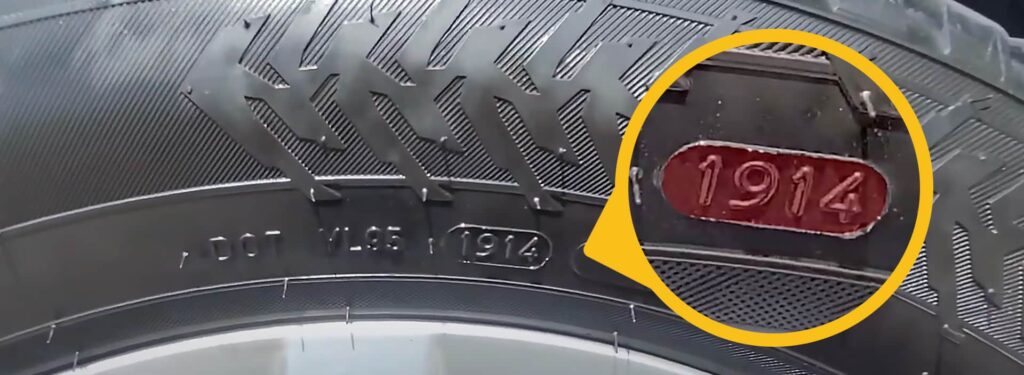Tire Manufacturing Defects: Causes, Types and Outcomes
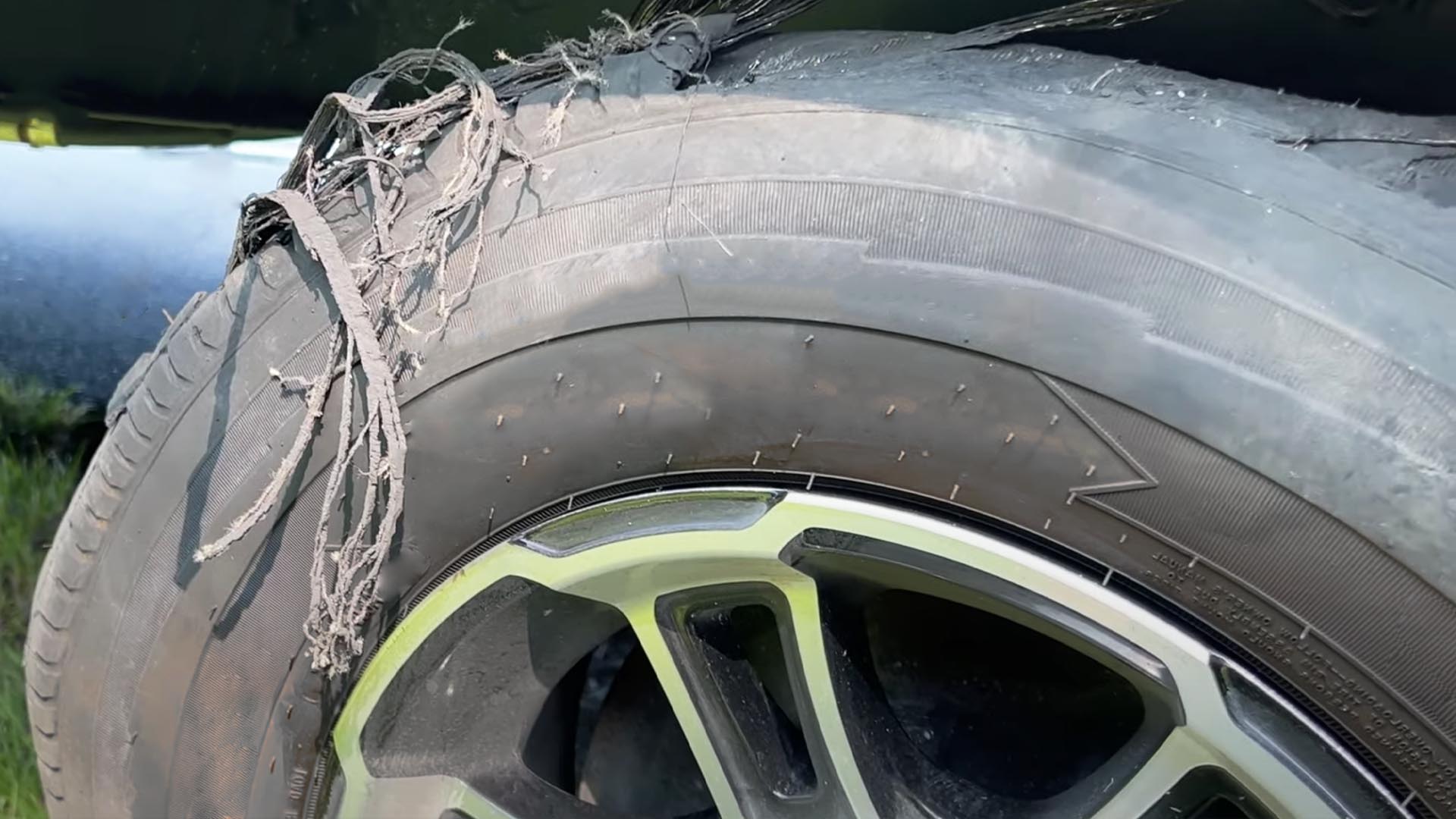
Tire failure isn’t the main reason for accidents on American roads, but it happens enough to be a big problem. The National Highway Traffic Safety Administration (NHTSA) says that tire failure is the cause of around 35% of accidents.
While there are multiple causes of tire failures, manufacturing defects can quietly lurk within the tires until they eventually lead to tread separation or blowouts.
In this article, we explore the common types of dangerous tire manufacturing defects that can be hazardous to drivers and other road users, as well as the potential outcomes of such defects. We’ll also provide some practical tips on how to check your tires’ safety levels before hitting the road.
Causes Of Tire Manufacturing Defects
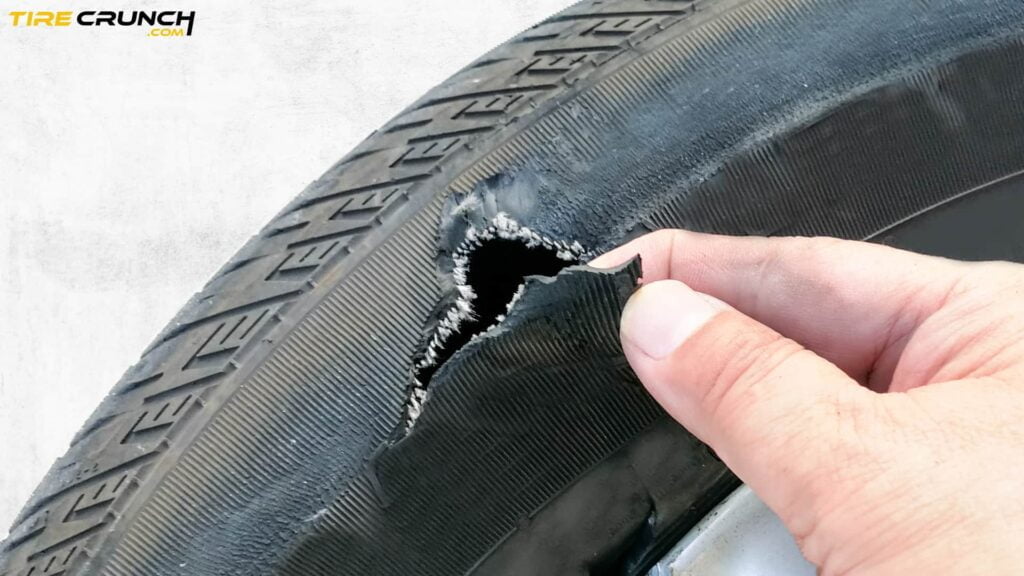
Making tires for cars is a complex process, and tire manufacturers need to be super careful every step of the way so that their products don’t cause any problems.
Every tire maker follows its own set of steps that starts with picking out raw materials and goes all the way up to making sure quality control standards are being met. If a company isn’t doing a good job checking that everything’s going okay during production, it could end up with sneaky defects in the tires.
And sometimes, the cause of tire failures is tire manufacturing defects. Yes, sometimes tire manufacturers can mess up too.
If bonding doesn’t go right during production, if unwanted stuff finds its way inside a tire during manufacturing or if tires aren’t made from good-quality stuff or aren’t baked properly after being put together — all of these things could lead to tread separation and other tire failures down the line.
These hidden problems might show up right away when someone buys a new tire, or they might develop later on while it’s being used. Either way, they’ll make it harder for your car to perform well and be comfy to ride in.
Common Types of Dangerous Tire Defects
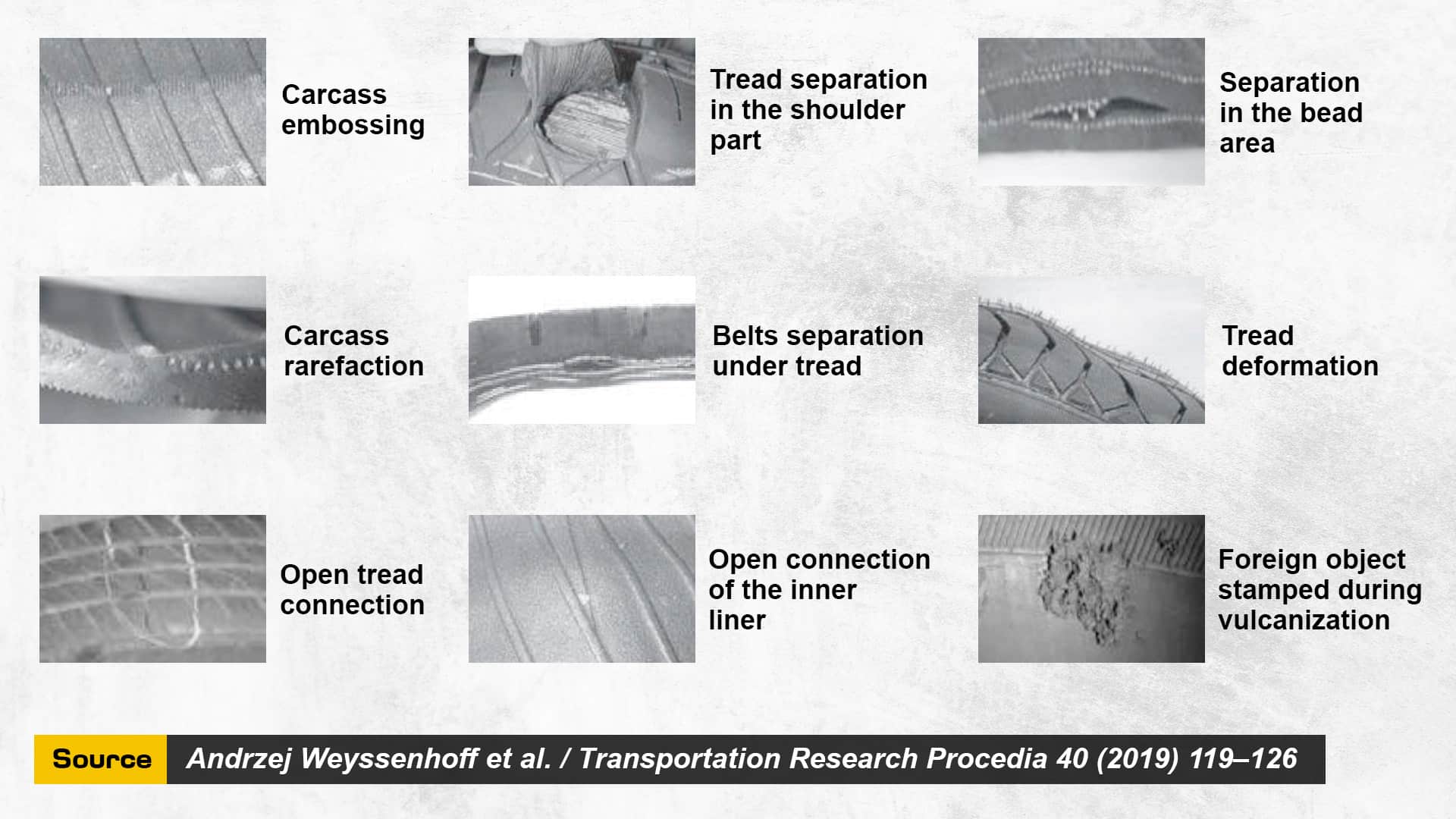
According to the research study “Characteristics and investigation of selected manufacturing defects of passenger car tires”, the most common tire manufacturing defects are the following:
The outcome of tire manufacturing defects
There are several potential outcomes of tire manufacturing defects, including:
What is a tire blowout?
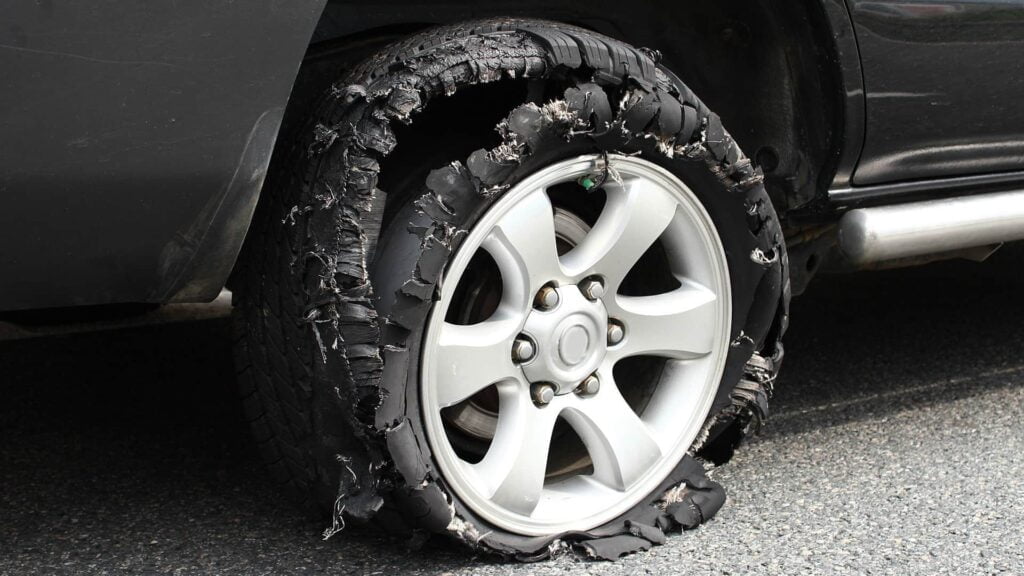
A tire blowout is something you really don’t want to happen. It’s a sudden and complete loss of air pressure from a tire. This can cause the tire to burst with a loud popping sound and may cause the car to swerve or lose control.
There are a few things that might cause a tire to blow out. For example, running a tire in an underinflated or overinflated state or overloading your car puts extra pressure on the tire, and in the end it can cause it burst.
But even tires that are properly maintained and in good shape can still have blowouts, especially if they get too hot or tire manufacturers didn’t follow good guidelines for quality.
What is a tire Tread Separation?
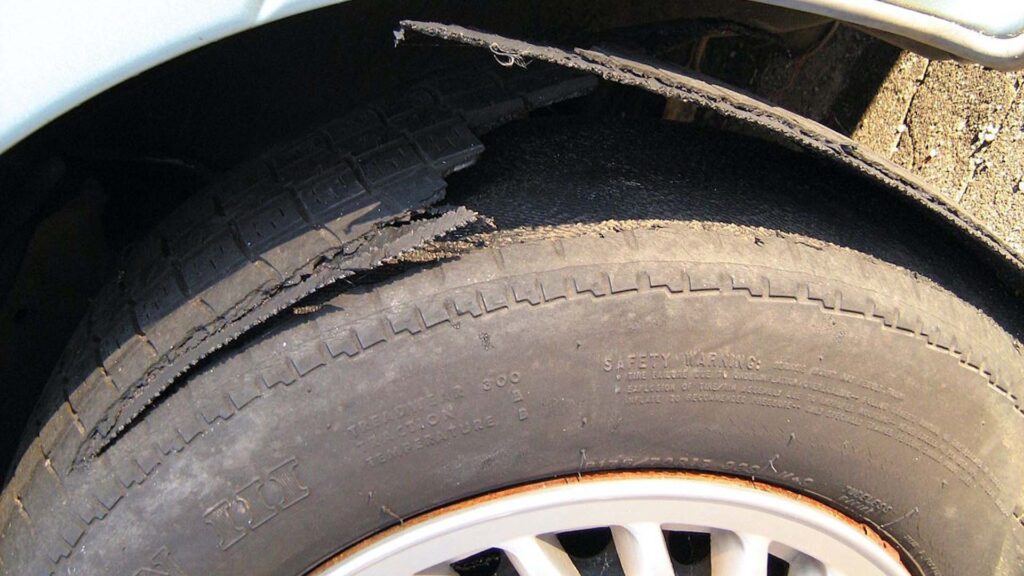
Tire tread separation is a dangerous condition in which the tire’s outermost layer (the tread) separates from the underlying layers.
This can occur due to manufacturing defects, improper maintenance or age-related wear and tear. When the tread separates, it can cause loss of control of the vehicle and lead to accidents.
What Is A Tire Recall?
A tire recall is when a tire manufacturer or the National Highway Traffic Safety Administration (NHTSA) determines that a particular brand or model of tire has a safety-related defect. The manufacturer is required to notify affected consumers and provide free repairs of the defective tire(s), usually through dealerships or authorized service centers.
The Issues With Tire Recalls
There are a few issues with how recalls work that makes things tricky:
Tire Safety Tips
- If the rubber on the tire’s tread is less than 2/32 of an inch thick, it’s considered bald. Most tires have little markers built-in that tell you when they’re worn out. These markers (called “treadwear indicators”) are raised parts in between the grooves of the tire. When they stick up just as high as the regular tread, then your tires are too worn and need to be replaced.
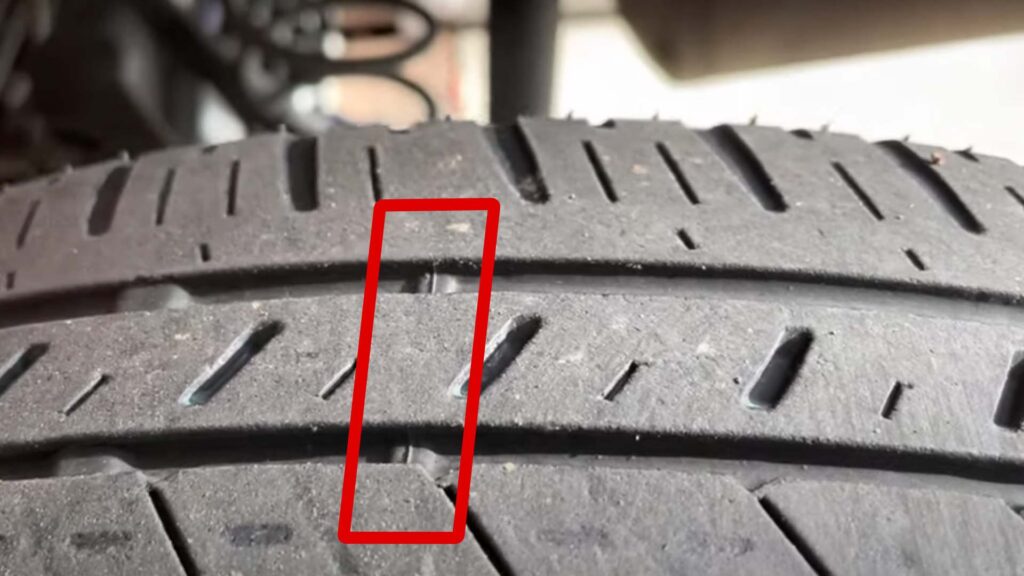
- To get an idea of how much tread you have left without using these markers: put a penny upside-down so Lincoln’s head is pointing towards you right in one of the big grooves. If his head is visible above the surface and not tucked into any grooves, it’s time for some new wheels!
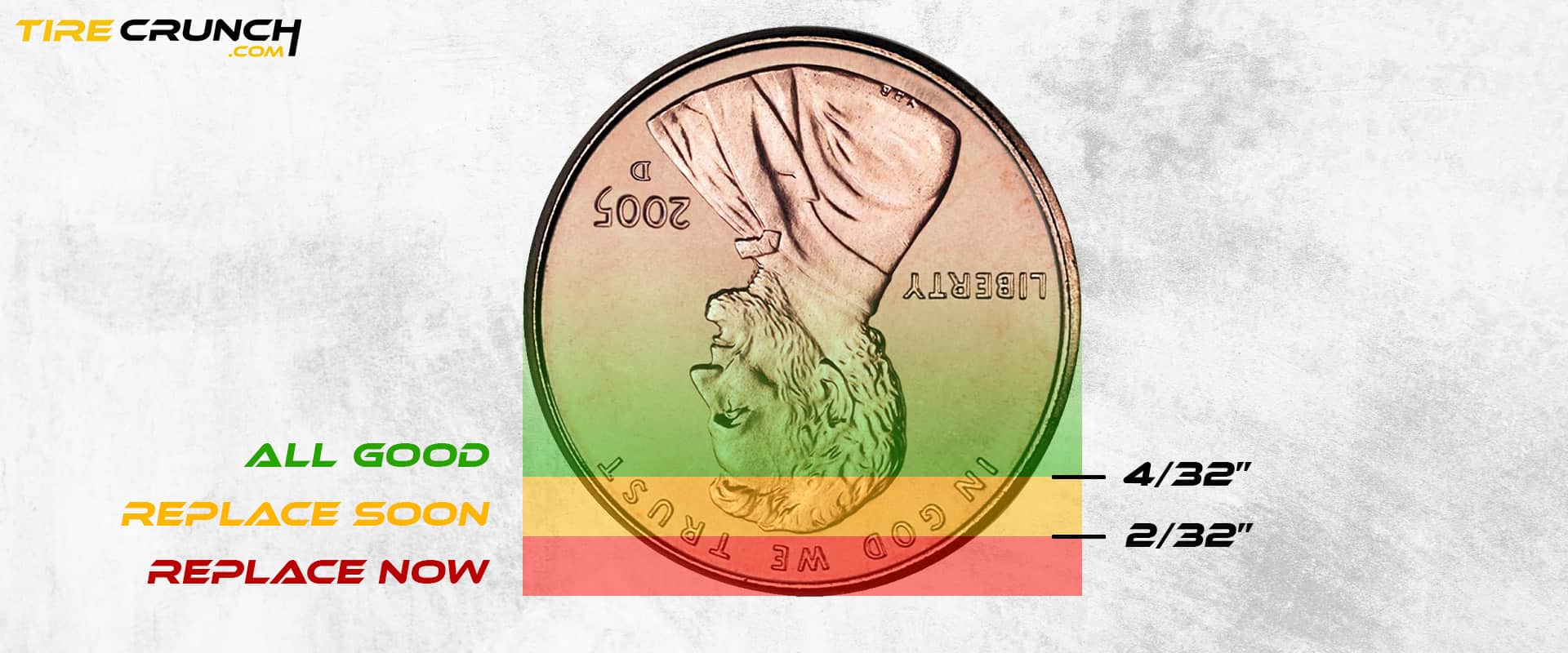
- Think twice before keeping a tire past the five-year mark; rubber becomes brittle over years since manufacturing thus increasing the risk for catastrophes like blowouts on highway speeds!
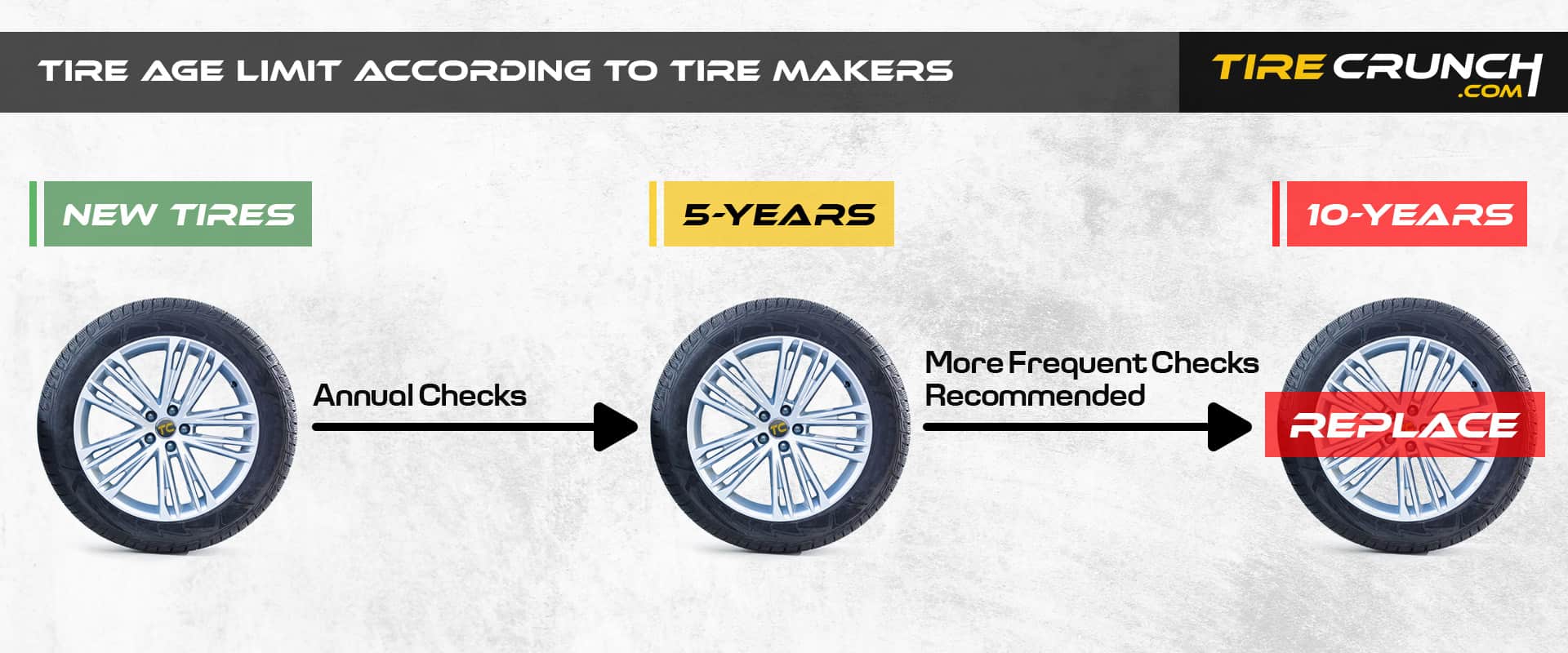
- So how can you tell when your tire was manufactured? Look for the Department of Transportation or DOT code on the sidewall of the tire. The code starts with “DOT” and ends with the week and year of manufacture. For example, if the code ends with “1914,” it means the tire was made in the 19th week of 2014.
